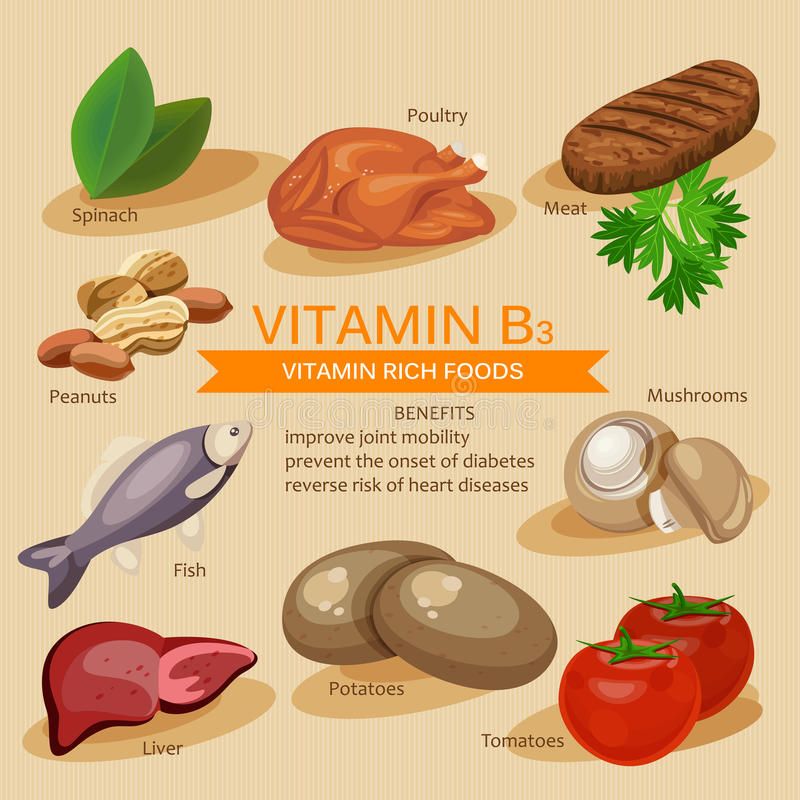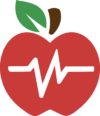Vitamin B3, also known as niacin, is an essential nutrient that plays an important part in maintaining good health. From supporting metabolism to promoting cardiovascular health, Niacin (Vitamin B3) is essential for overall well- being.
The two types of nicotinamide adenine dinucleotide (NAD+ and NADH) and nicotinamide adenine dinucleotide phosphate (NADP+ and NADPH), which are vital for vital metabolic processes in living cells, are precursors of niacin. It is crucial for transforming food into energy (1).
In this article, we will explore the various aspects of Vitamin B3, including its functions, benefits, side effects, deficiencies, food sources, flushing phenomenon, recommended daily allowance, and supplementation.
Function of Niacin
Vitamin B3 is involved in numerous physiological processes, including:
- Energy metabolism: It aids in converting food into energy, which is essential for cellular functions.
• DNA repair: Vitamin B3 plays a role in repairing damaged DNA, thereby supporting cell health and replication.
• Nervous system function: It contributes to the proper functioning of the nervous system, helping to transmit signals between nerve cells.
• Cholesterol regulation: Niacin can help lower LDL cholesterol levels and increase HDL cholesterol levels, promoting heart health.
Benefits of Niacin for overall health
Beyond its involvement in fundamental biological processes, vitamin B3 has other advantages. Among the main advantages are:
• Cardiovascular health: Niacin has been shown to support heart health by improving lipid profiles and reducing the risk of cardiovascular diseases.
• Skin health: It may help improve skin conditions like acne and rosacea due to its anti-inflammatory properties.
• Cognitive function: Vitamin B3 is crucial for maintaining brain health and cognitive function, potentially reducing the risk of age-related cognitive decline.
Reducing cholesterol: Vitamin B3 has the ability to reduce triglycerides and LDL (bad) cholesterol while raising HDL (good) cholesterol.
Niacin (Vitamin B3) Deficiency

A minor niacin deficiency can slow metabolism and create mild symptoms, but if it left untreated, a severe deficiency might be deadly. Black tongue is another condition that cats and dogs get from niacin deficiency.
Although niacin insufficiency is uncommon in developed countries, it can occur in situations where protein balance is disturbed, such as in communities where a lot of maize is consumed as a main meal because niacin in corn is biologically unavailable unless it is treated with alkali before ingestion.
A niacin deficiency leads to a nutritional condition known as pellagra. Pellagra is derived from Italian words “pelle agra,” which means rough skin. This medical condition is characterized by
- Dermatitis: Skin rash, redness, and irritation, particularly in areas exposed to sunlight.
- Diarrhea: Frequent and watery stools due to gastrointestinal inflammation.
- Dementia: Cognitive impairment, confusion, and memory loss resulting from neurological damage.
This well-known set of signs and symptoms is commonly referred to as pellagra’s four Ds. Dermatitis, Diarrhea, dementia, and if left untreated it leads to Death.
Food sources of Vitamin B3
Food Sources of Vitamin B3: Vitamin B3 can be obtained from various food sources, including:
Significant amounts of free niacin are present in unfortified food. Tryptophan, which is found in dietary proteins, is biosynthesised to provide the majority of the niacin needed by humans and other animals. Nicotinamide can be used for fortification in place of nicotinic acid, however at greater doses, it can be toxic to the liver and have adverse effects including flushing. Nicotinamide is thus typically used as a supplement.
Foods high in protein are excellent source of vitamin B3 (niacin).

- Meat: Beef, pork, chicken, and turkey are rich sources of niacin.
- Fish: Tuna, salmon, and mackerel contain significant amounts of Vitamin B3.
- Legumes: Peanuts, lentils, and beans are excellent plant-based sources of niacin.
- Whole grains: Brown rice, barley, and oats provide niacin along with other essential nutrients.
Niacin supplementation at recommended levels has not been associated with many difficulties; nevertheless, consuming extremely high dosages, especially of nicotinic acid, which can be harmful.
Understanding the Concept of Flushing with Niacin (Vitamin B3)
Niacin supplementation frequently causes flushing, a typical side effect that is characterized by an irregular sensation of warmth and redness in the face and upper body. Niacin’s impact on prostaglandin production causes blood vessels to dilate, which is the source of this occurrence. Flushing is typically not harmful; however some people find it unpleasant.
Niacin (Vitamin B3) Recommended daily allowances of Niacin
The recommended daily allowance (RDA)of Niacin varies depending on age, gender, and life stage.
| Age Group | Recommended Daily Allowance | |
| Children | 1-3 years | 6 mg/day of niacin equivalents |
| 4-8 years | 8 mg/day of niacin equivalents | |
| Boys | 9-13 years | 12 mg/day of niacin equivalents |
| 14-18 years | 16 mg/day of niacin equivalents | |
| Girls | 9-13 years | 12 mg/day of niacin equivalents |
| 14-18 years | 14 mg/day of niacin equivalents | |
| Men | 19 years and above | 16 mg/day of niacin equivalents |
| Women | 19 years and above | 14 mg/day of niacin equivalents |
| Pregnant Women | 14-50 years | 18 mg/day of niacin equivalents |
| Lactating Women | 14-50 years | 17 mg/day of niacin equivalents |
Niacin (Vitamin B3) Supplementation
Vitamin B3 supplements: It could be encouraged to take supplements in the event that an individual has specific clinical issues or can’t get sufficient vitamin B3 from their food. Supplements containing niacin are presented in immediate-release, extended-release, and flush-free formulations plans. Prior to starting any supplementation schedule, it is fundamental to talk with a medical care supplier to lay out security and recognize the legitimate dose.
Niacin (Vitamin B3) supplementation’s common adverse effects
Supplementation is generally not essential in developed countries. Breakfast cereals, baby formula, and other meals are frequently fortified with nicotinamide.
The use of vitamin B3 supplements provides many advantages, but there are some potential drawbacks as well, such as:
- Flushing: A common side effect characterized by redness, warmth, and tingling in the face and upper body.
- Nausea and vomiting: Some individuals may experience gastrointestinal discomfort when taking high doses of niacin.
- Liver toxicity: Prolonged intake of high doses of niacin may lead to liver damage in some individuals.
- Raised blood sugar: Supplementing with vitamin B3 can sometimes result in elevated blood sugar, which may be concerning for those who have diabetes.
Conclusion
Vitamin B3, or niacin, is a crucial supplement with various medical advantages and works in the body. From supporting energy digestion to advancing cardiovascular wellbeing, Vitamin B3 assumes a significant part in keeping up with by and large prosperity. While inadequacies can prompt serious medical problems like pellagra, sufficient admission of niacin-rich food sources and supplementation when vital can assist with forestalling lacks and backing ideal wellbeing. By figuring out the capabilities, benefits, incidental effects, and wellsprings of Vitamin B3, people can settle on informed decisions to advance their wellbeing and prosperity.

